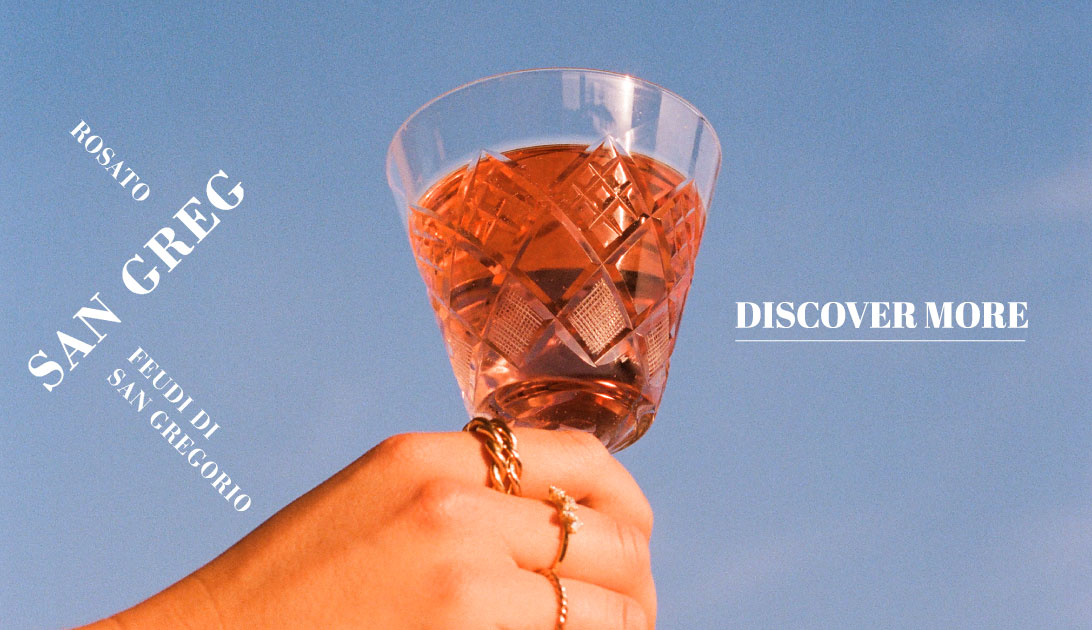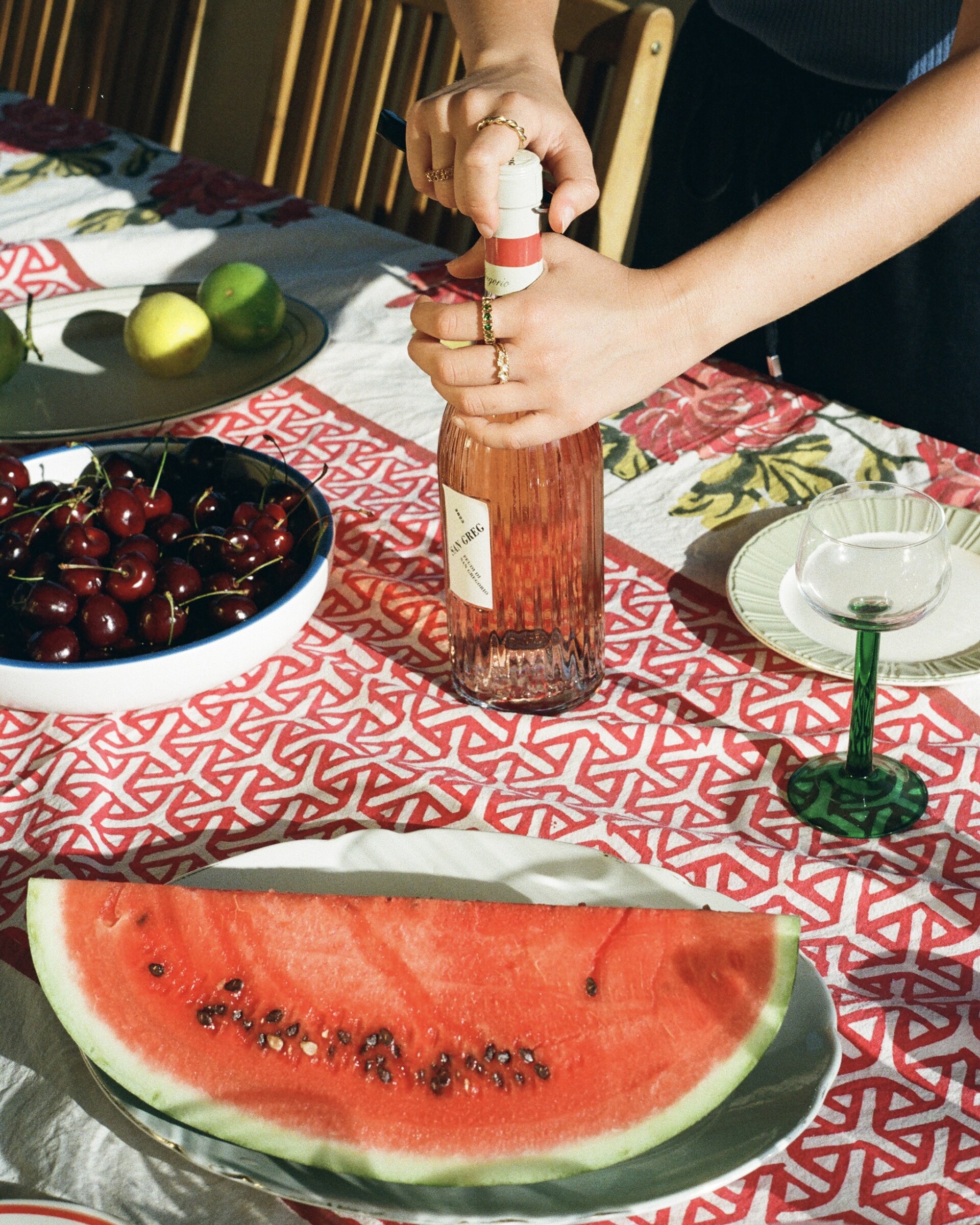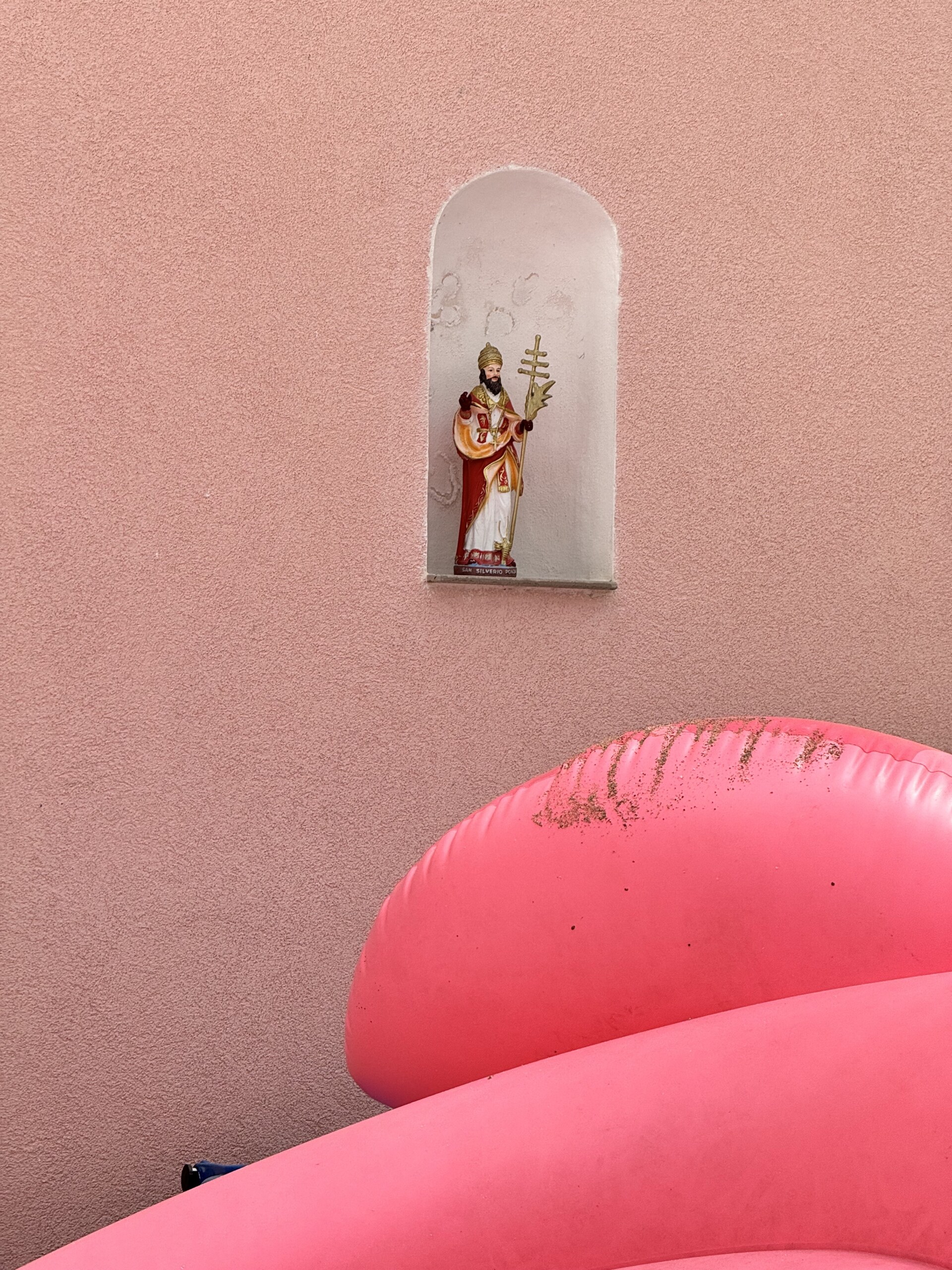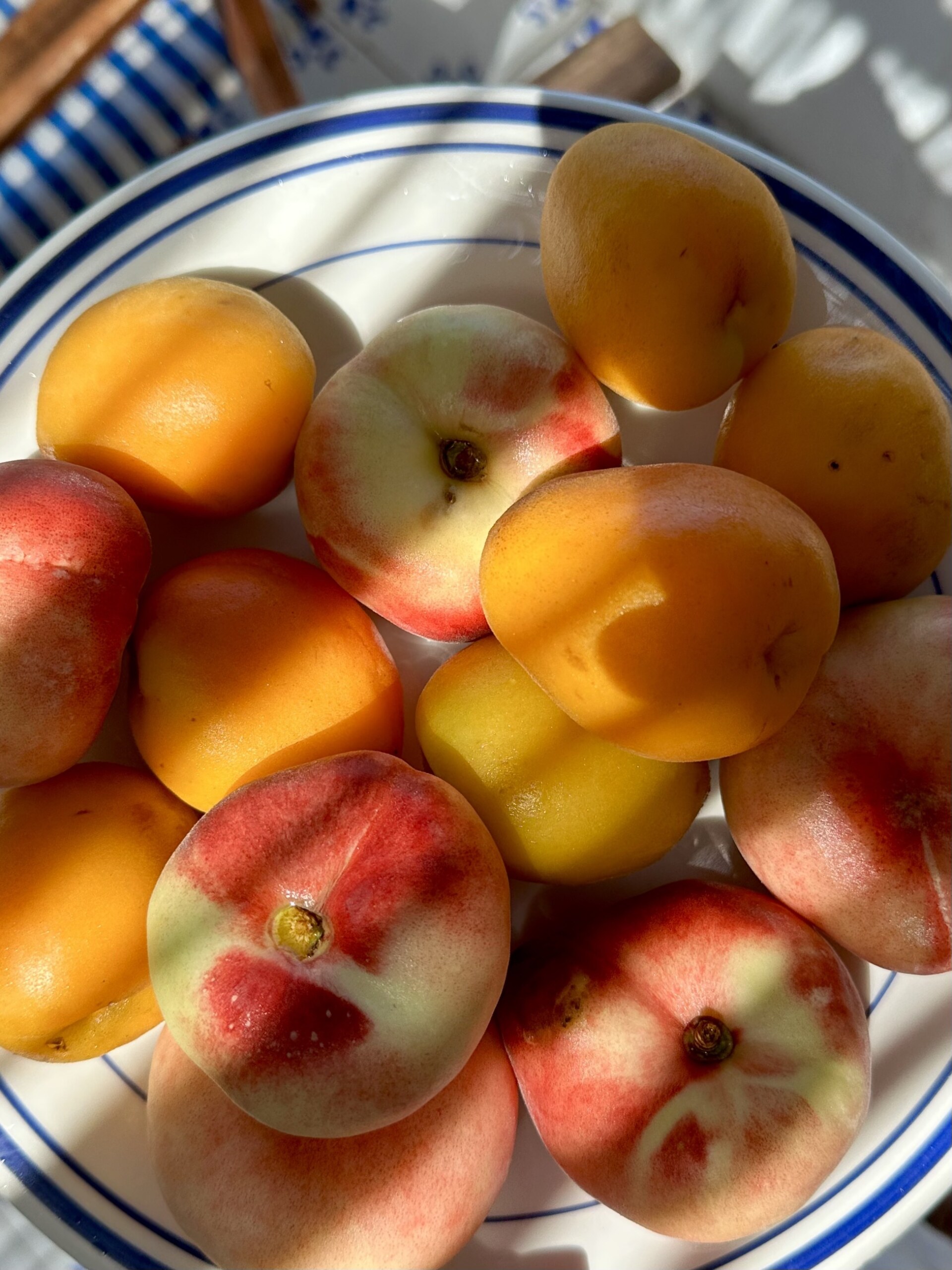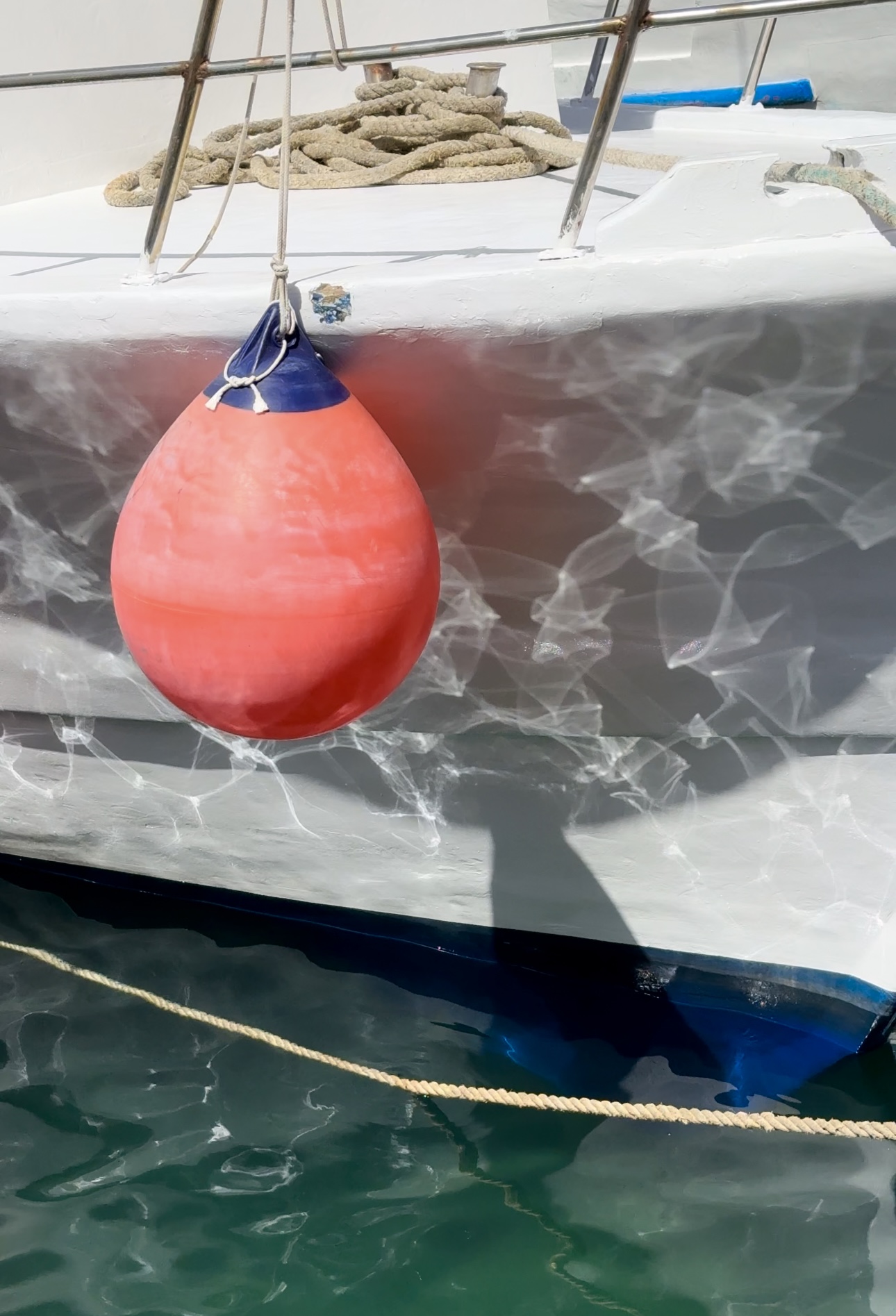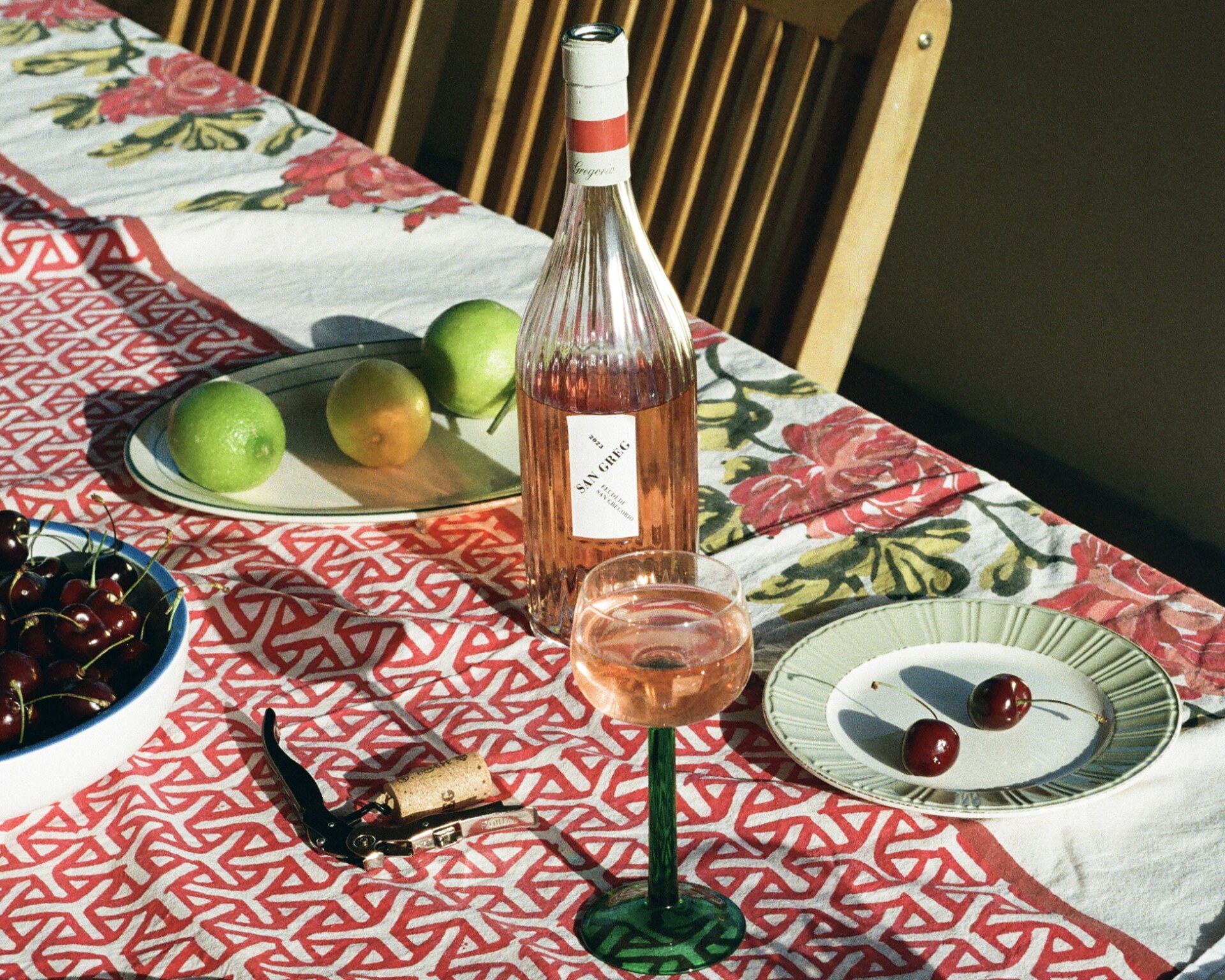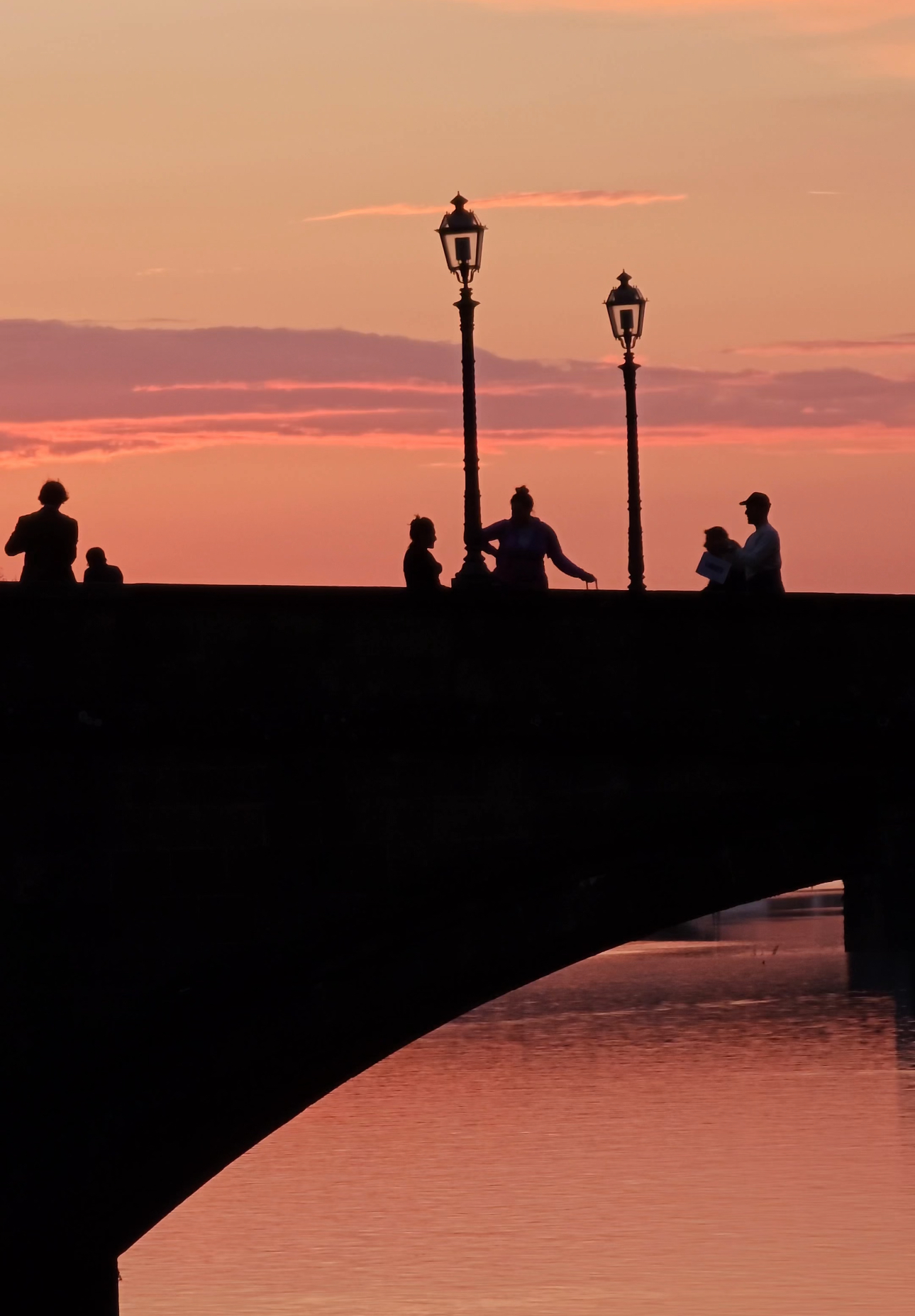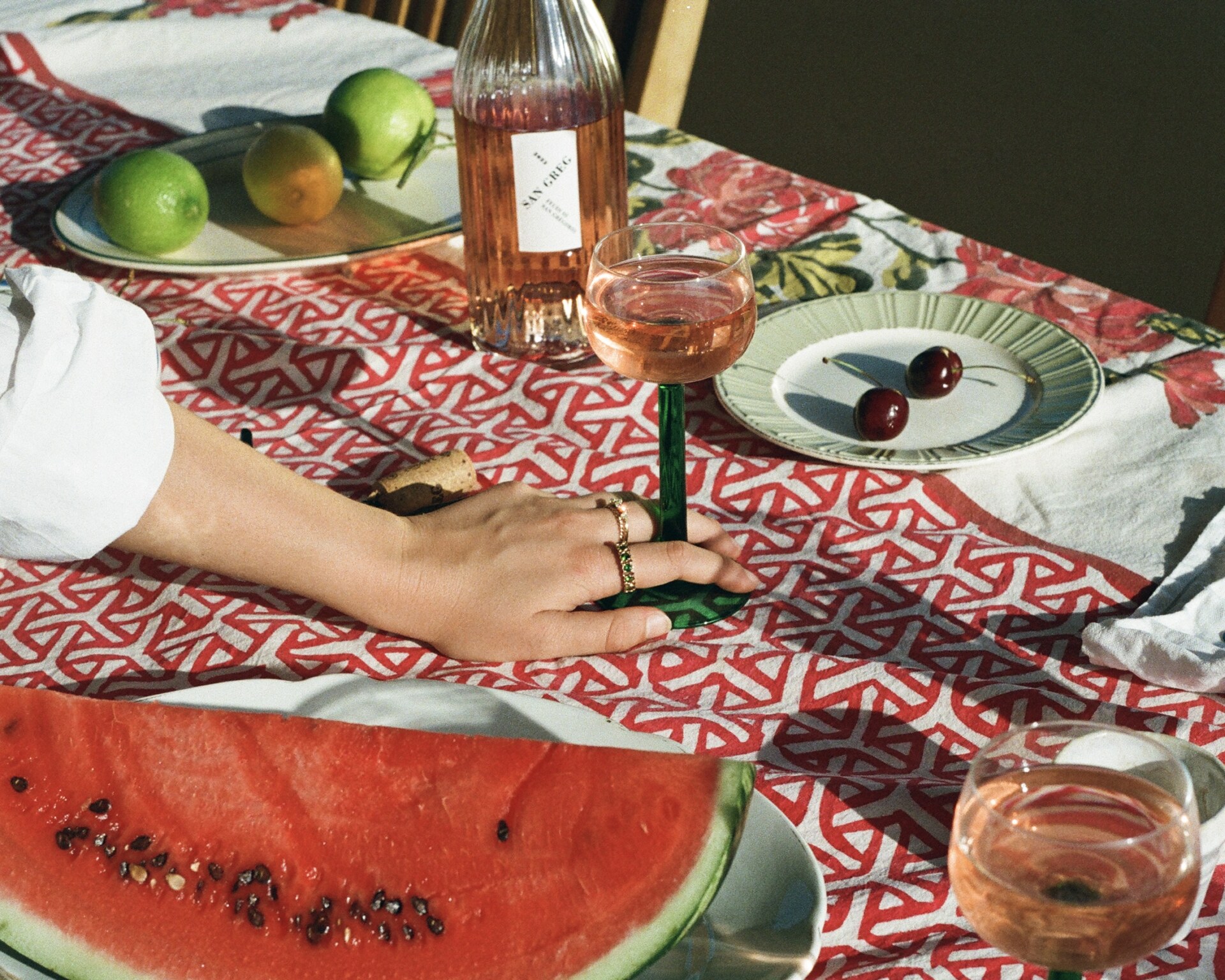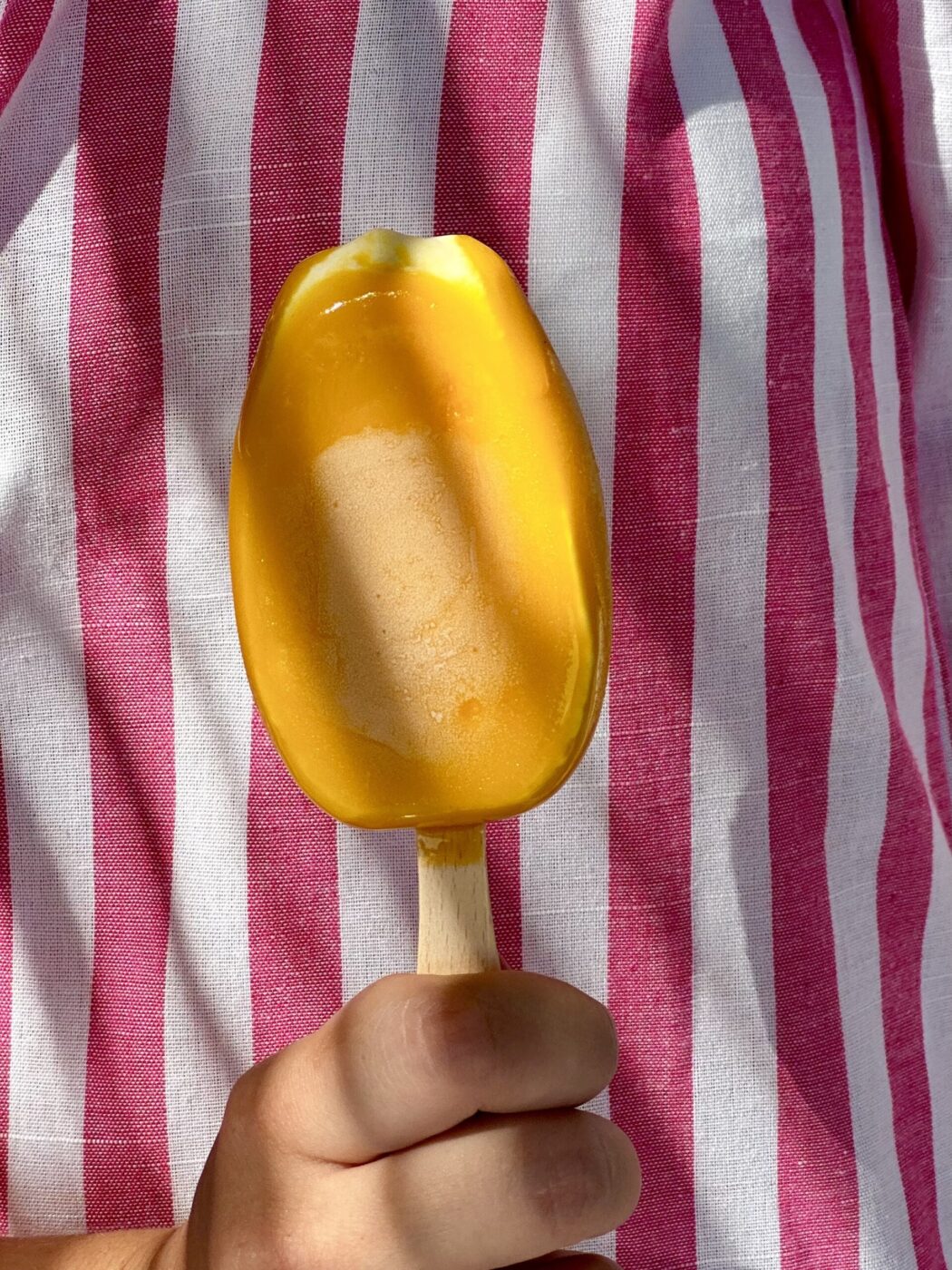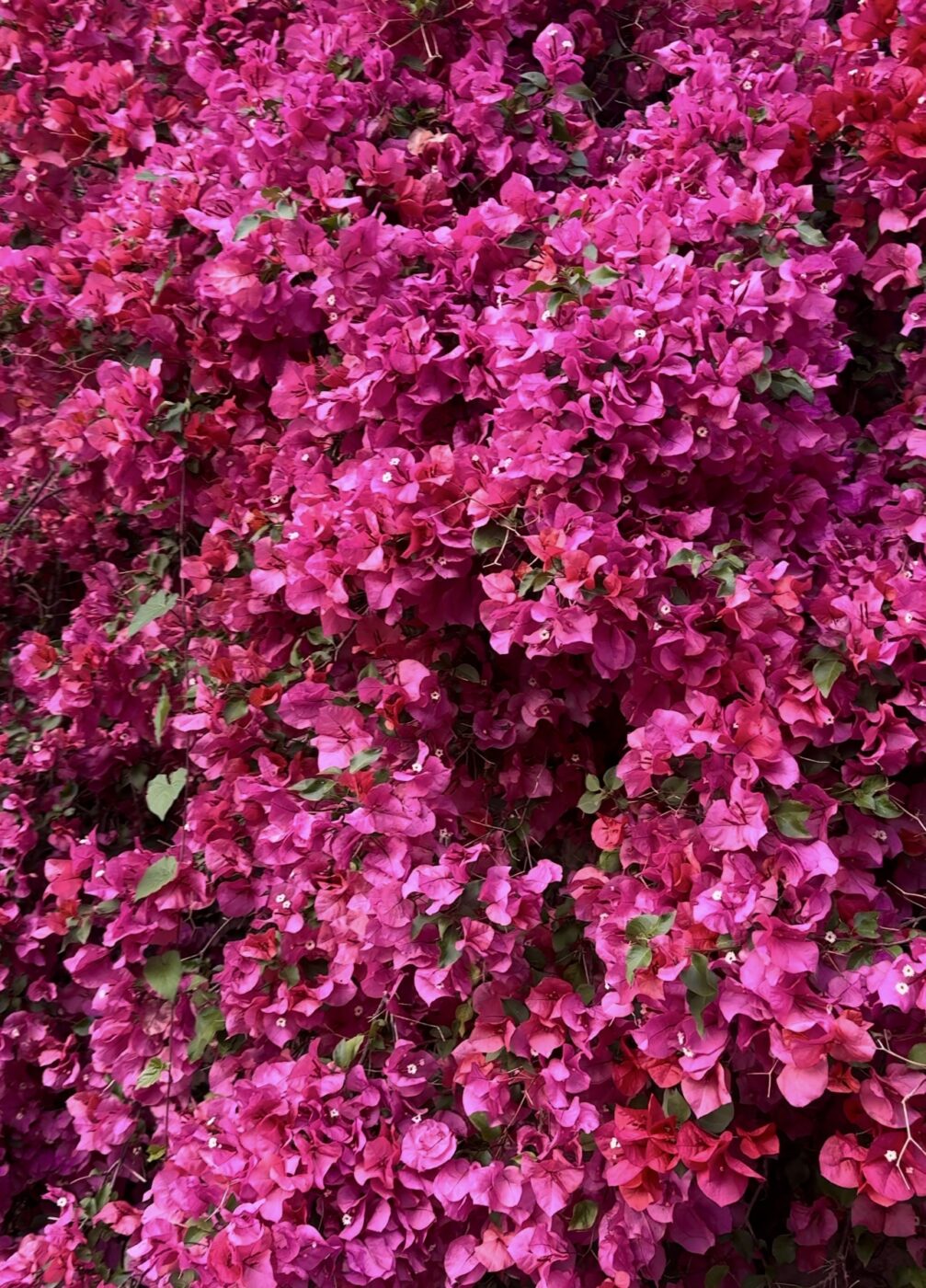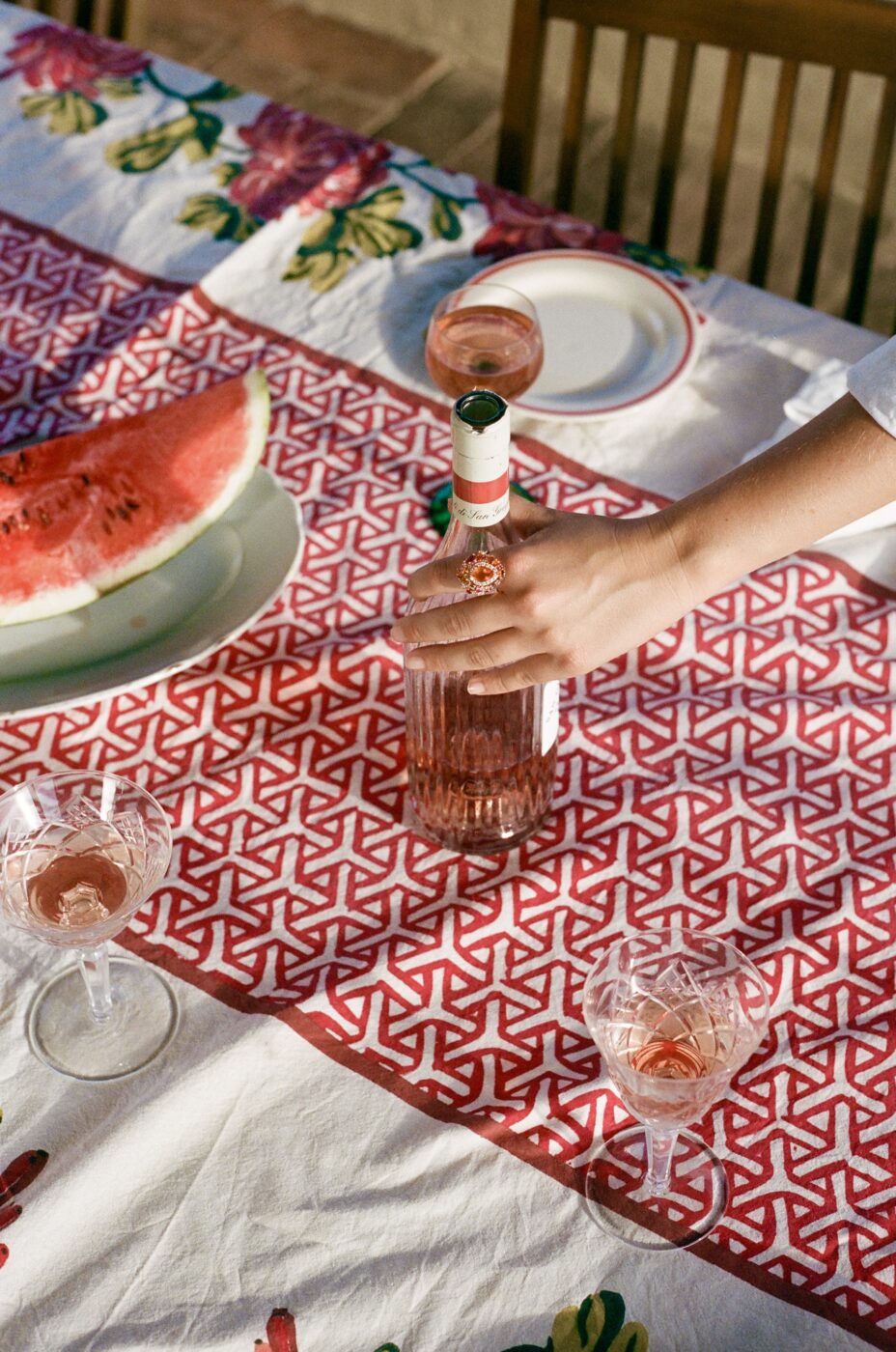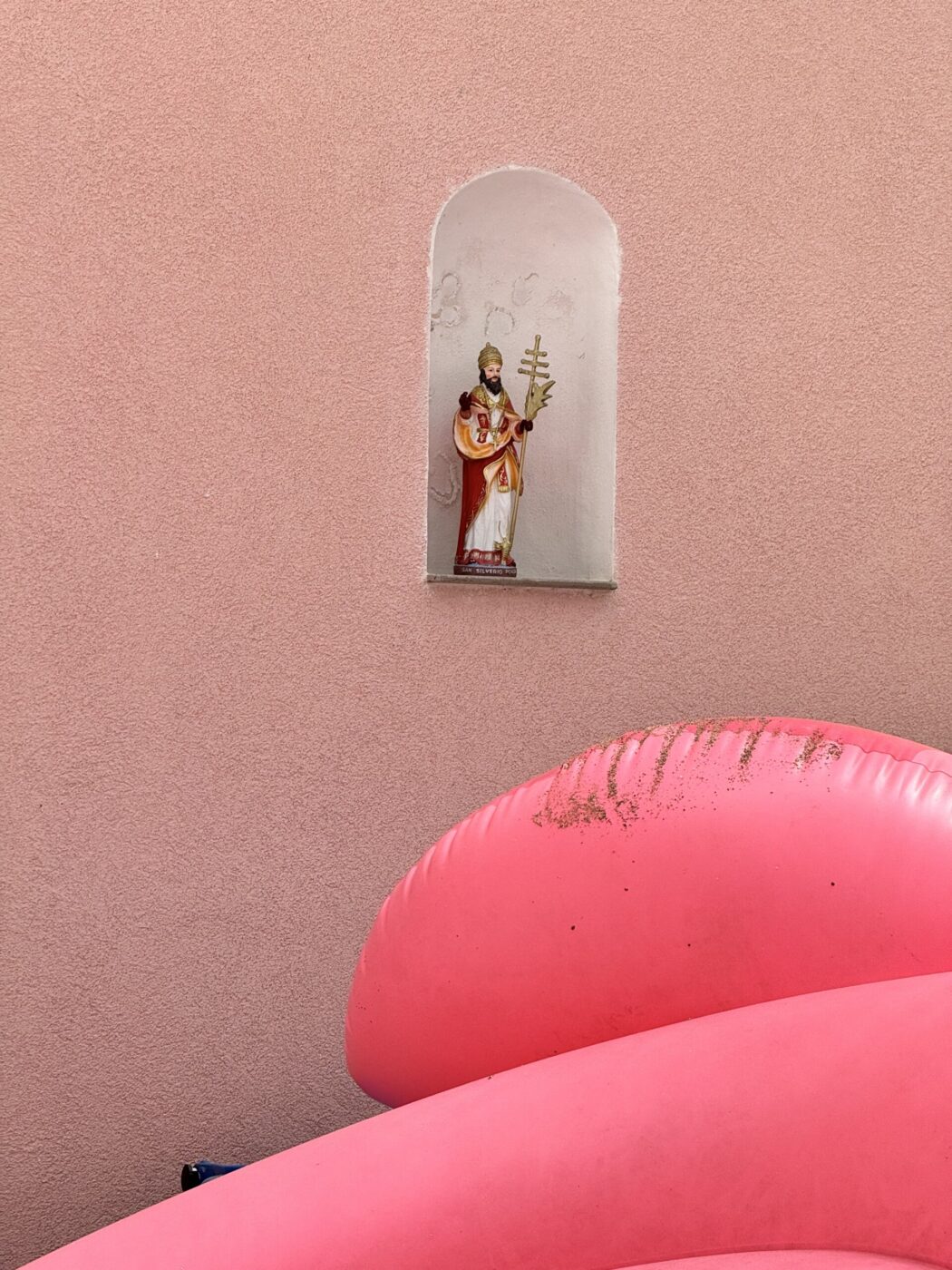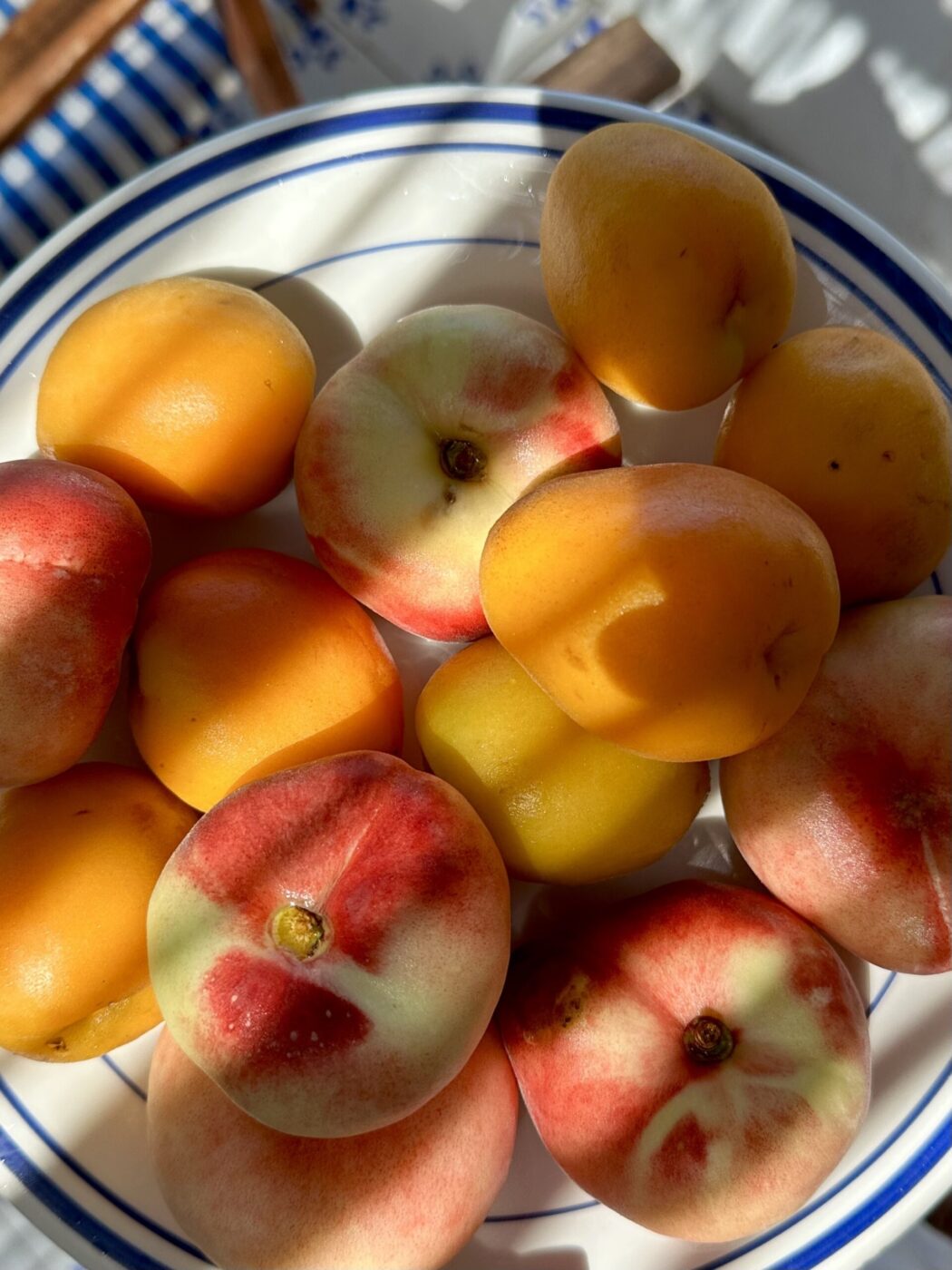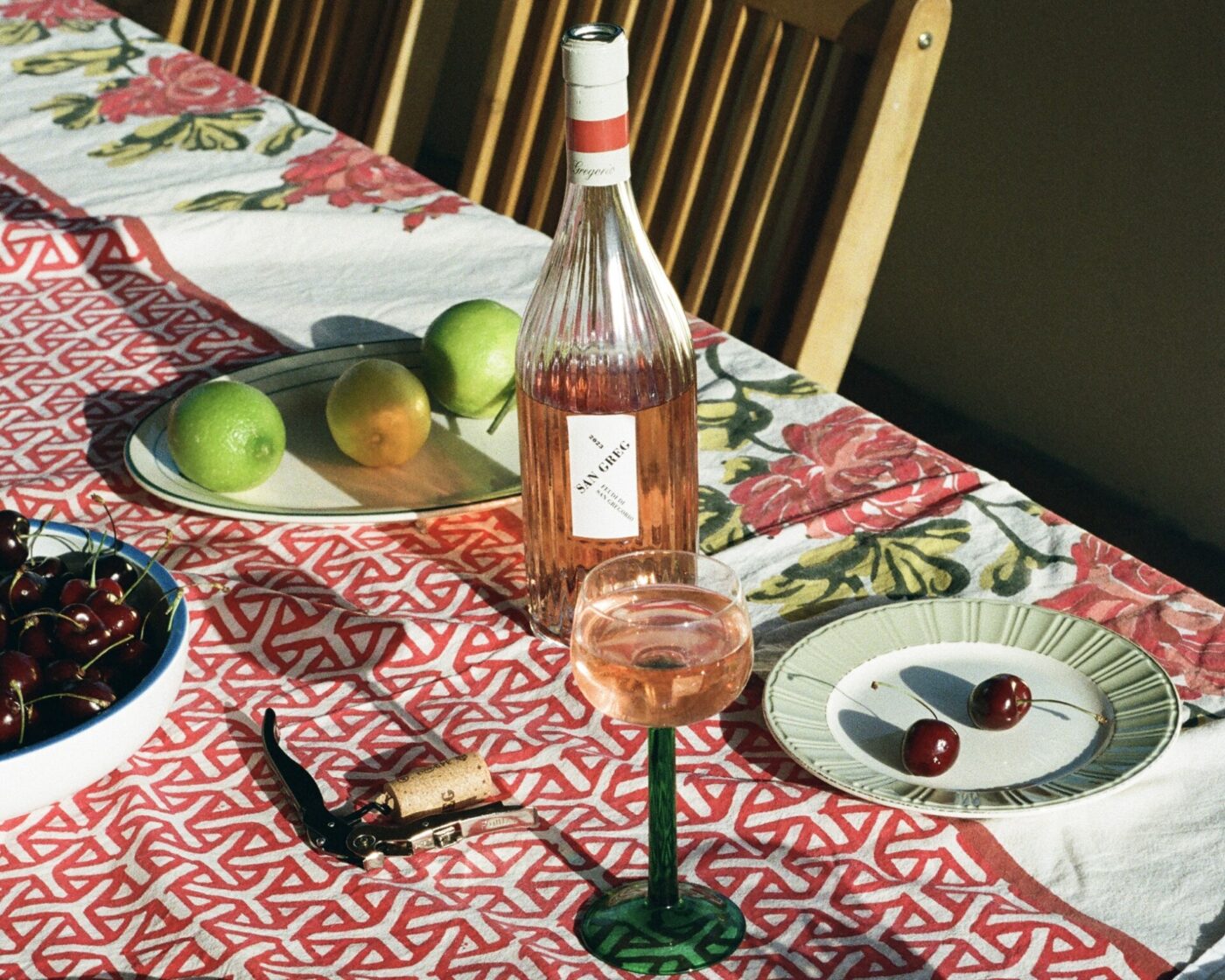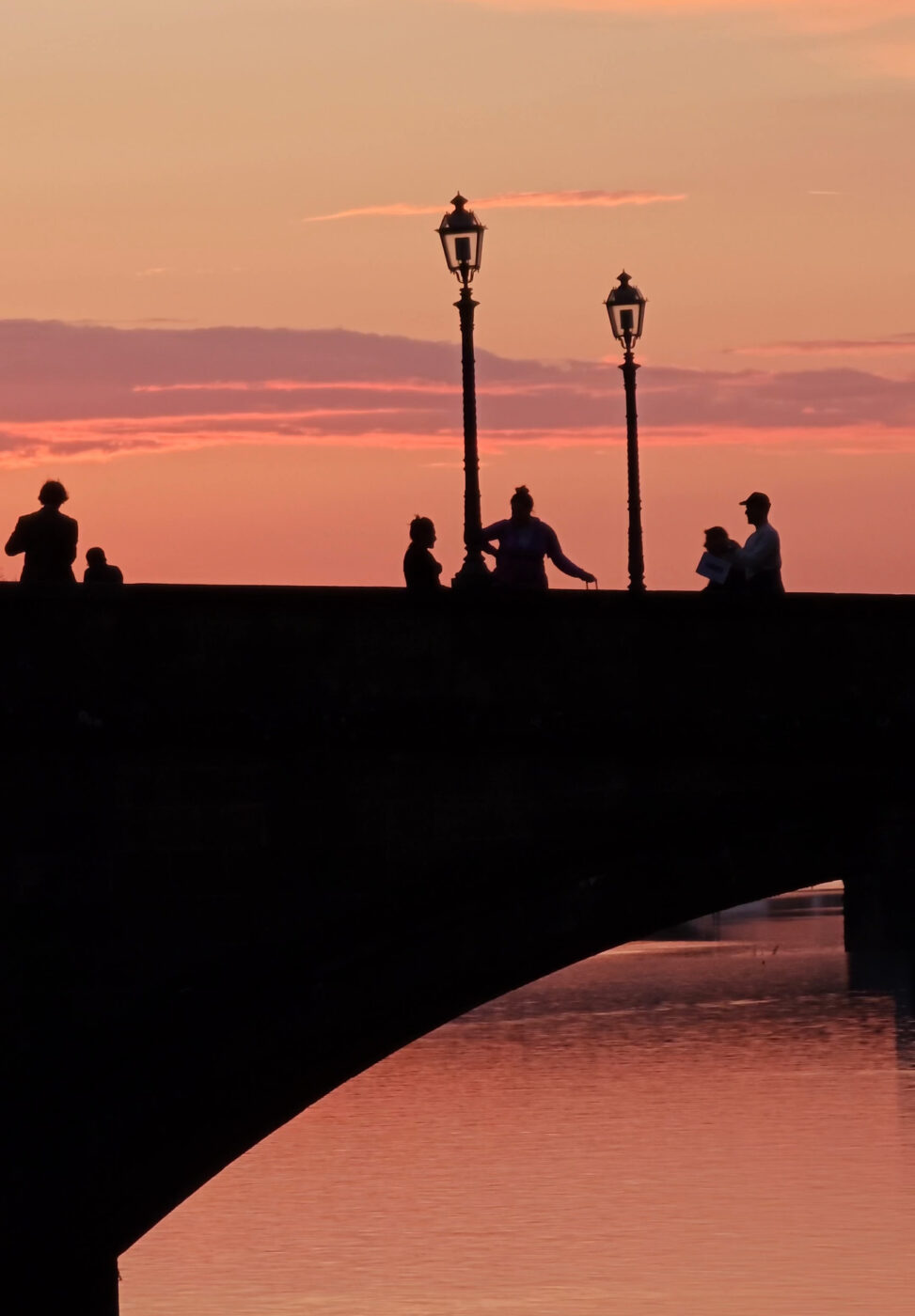Italy is a country of colors. The brightest blues you’ve ever seen line 7,900 km of coastline, and countless shades of green are splattered across hillsides and mountains and plains–not to mention basil, olio nuovo, and the green-glass damigiane. Yellow coats poste boxes and mustard-colored villas and long strands of spaghetti in carbonara. Purple is draped over pergolas and trellises in the form of wisteria. Orange is the color of Estathè and melone (best paired with prosciutto) and beach umbrellas; red that of Bologna and tomatoes–painted across the top of pizza bianca to make pizza rossa–as well as vintage Fiat 500s and Tuscan poppies.

The colors are countless, really, but there’s none more representative of summer than pink. In its lighter shades, soft and peaceful, reminiscent of the season’s slow rhythms–lazy strolls seaside with cones of gelato in hand, endless aperitivos with San Greg rosé, afternoons spent playing hand after hand of Scopa and Burraco. In its brighter shades, poppy and fun, pink recalls summer’s spontaneous days–kids diving off of rocks with little shrieks, tormentoni blasting at bagni, the fireworks of Ferragosto.

The color marks estate italiana from the tip to the toe of our country. Down in Sicily, the red shells of Mazara’s prized prawns give way to a delicate pink flesh–so beautiful that they shouldn’t be eaten any other way but raw and perhaps with a drizzle of olive oil and a squeeze of lemon. They’re almost the same color as the region’s saline (salt pans), where, from the mineral-rich waters in Marsala, salt farmers harvest heaping piles of the gleaming crystals. Along the crescent-shaped coastline of Liguria, pastel-colored houses perch precariously on the hills that seem just about to tumble into the sea. In Portofino and Rapallo, Cinque Terre and the Gulf of Poets, pinks are painted onto the facades of buildings–a technique that dates back to the 17th century to add an illusion of beauty and wealth without the expense of commissioning elaborate marble columns and intricate window carvings. In Tuscany, Brogiotto Nero figs are to be plucked right off the bough; pink inside and with a honey-like flavor, they’re best popped straight into your mouth or jammed and spread over pasta frolla for a crostata. In Umbria’s Castelluccio, wildflowers in a whole range of pinks dot grassy fields as far as the eye can see, while on the Amalfi Coast, where the humidity level mirrors that of the flower’s tropical provenance, bougainvillea cascades down from walls and pergolas; it’s thanks to the warm, humid air here that the flowers can grow in such abundance. In Maremma’s Capalbio, Barbie-pink flamingos populate Burano Lake alongside another 270 bird species.

But you also don’t have to travel to find the pinks of an Italian summer. We can trace the color from the season’s rosy-fingered dawn to its ballet-slipper sunsets, no matter where in the country we are. It’s found in the evergreen Fruitella at the bagno and the Fior di Fragola gelato confezionato pulled from the freezer. It’s found in the endless slices of watermelon that leave us with sticky fingers on Ferragosto and the peaches that we slice up and drop into glasses of wine.

It’s grapefruit granita, taffeta dresses that our elders wear as their Sunday best, and the jellyfish that kids catch and pile up on the docks. If you pay attention, you’ll spot the pink bows tied onto doors, notifying passersby that a baby girl has been born. It’s found in the prosciutto cotto that, stuffed into a simple rosetta, we bring for lunch to the beach, and in the €2 scoop of blush-pink strawberry gelato. It’s the pink cheeks (and noses and shoulders) that inevitably follow after the first few days in the sun. It’s summertime aperitivo, best tinted rose with San Greg rosé from Irpinia (in the little-known eastern side of Campania)–to be accompanied with bruschetta, whose tomatoes have soaked into the bread, leaving the previously blank canvas, you guessed it, pink.

